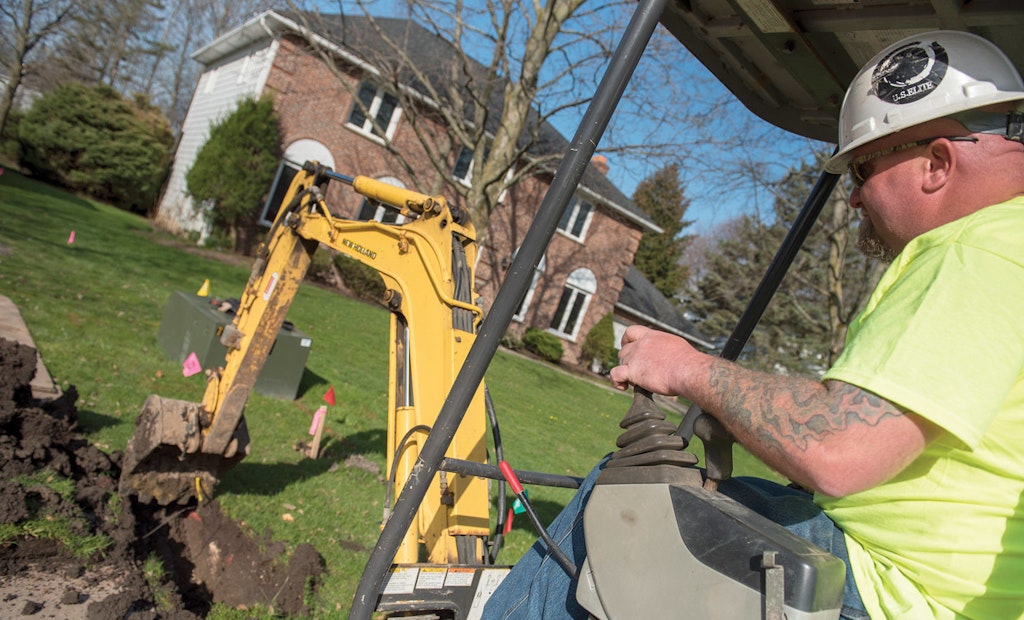
Doing your own excavating work on pipe repair jobs can give you better profit margins, but it’s important to get proper training and learn to do the work safely.
Interested in Relining/Rehab?
Get Relining/Rehab articles, news and videos right in your inbox! Sign up now.
Relining/Rehab + Get AlertsA common task for a plumber or drain cleaner is to diagnose a broken water or sewer line, pinpoint where it needs to be dug up, safely excavate that section of piping, and make a repair.
There are many different ways to repair broken lines these days, but if the line is completely broken, many times the only repair option is to dig it up and complete a spot repair. If you are a small plumbing shop, and you sub out the excavation to another contractor, this information will fall on deaf ears. But if you would rather get paid full price for the excavation aspect of the job instead of a marked-up percentage, this information is for you.
There is no question that a full-time licensed operator knows more about running an excavator than any plumber. The excavation profession is vast, with many different types of equipment, personnel and areas of expertise. While there is no substitute for a great operator on a job, many of the smaller sewer spot repairs you run into can be safely done in-house for a better profit margin on the job.
Here are some tips to consider before performing a standard spot repair near other underground utilities.
Safety
There is nothing more horrific than media reports of technicians dying in trench collapses. A strategically planned excavation starts with safety considerations, such as using a one-call service to have the utilities marked. Knowing what you will be digging around is the most crucial safety factor.
Once you have the area marked, you need to ask yourself several more questions: How deep is the trench going to be? What kind of trenching or shoring do you need? Has this area recently been dug up? Is it on a hill? Where will you put the spoil?
What are you going to backfill the trench with? If you are going to use gravel or sand for bedding and cover, where are you planning on putting it? What kind of soil is it? How are your vans, trucks and other equipment going to move around easily? Do you have a safe means of egress? Are there overhead tree branches? Are there overhead power lines? Are there potential utilities that are private and unmarked by the location services? What is your plan in case of a struck gas line? What if there is a fire? What kind of bucket are you going to use? Are you working near a road? Should you be wearing high-visibility clothing? This list could go on forever.
The best way to learn about excavation safety is to enroll in either the OSHA 10 or OSHA 30 training courses online or at a nearby school. It will make you a better professional and give you a new respect for how dangerous our profession can be. This should be a mandatory requirement for employment.
Machine operating tips
Any great operator will tell you that going fast is counterproductive, dangerous and potentially damaging to the machine. The best operators live by the motto “smooth is fast.” Always use a spotter, and make sure the spotter is paying attention at all times. Make sure you use the blade of the machine to level the excavator at all times while digging. We have all been in that horrible trench that seems to have a slanted axis because the operator didn’t level the machine. If you level the machine, the trench will be plumb and safe.
When digging around utilities, it’s wise to use a bucket with no teeth. Many transmission line companies require you to use a toothless bucket while digging around their collector lines for good reason. It is less likely that you will snag a utility with a bucket tooth and puncture and rip it to shreds.
Also, you should not run the machine full bore when digging around utilities. Run the machine on a low idle and always operate both sticks at the same time, even if ever so slightly. Idling the machine low and doing two things at the same time will take power out of the machine and allow you to get a better feel of what you are digging. If you practice this, and slowly take and scrape a few inches of layers off at a time while avoiding taking big bites, you have an excellent chance of avoiding a utility strike.
If you feel something inconsistent once you get used to the feel of the soil, tell your spotter to hand-dig around the area until you verify what it is. Try to dig with what you are exposing, not across it, which has a higher risk for a utility strike.
Once you have exposed your objective, and have enough room to safely make a repair, slowly dig a sump hole so that the media escaping during a repair has somewhere to flow and can be easily pumped safely out of the ditch. Once the utility is exposed and the sump hole has been dug, set your trench box into the trench making sure it sits on firm ground and is level.
At this point, your crew members will set up a ladder and make the repair, and you will be on wall watch duty. Pay close attention to any safety issues you can see from your bird’s-eye view, and most important, look for potential cracks within the soil that may lead to a trench collapse.





